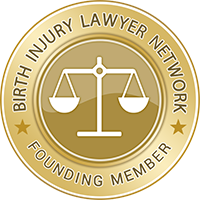Ohio Birth Injury Lawyers
Search Lawyers by Cities (Ohio)
Ohio Medical Liability/Malpractice Statutes of Limitation
All states have set deadlines for when a patient may file a civil claim, known as statutes of limitation, for medical liability and malpractice claims. The majority of the states have special provisions regarding the time limits for minors to file medical liability and malpractice claims. Twenty-two states have special provisions regarding foreign objects.
Ohio Rev. Code Ann. §2305.113 and §2305.16 One year from act, but no more than four years for discovery. Foreign object: one year from discovery. Minors: the person may bring case upon reaching majority.
Ohio Medical Liability/Medical Malpractice Laws
Damage Award Limit or Cap
§2315.21. Punitive and exemplary damages limited to twice the amount of compensatory damages. If the defendant is a small employer or individual, the court shall not enter judgment for punitive or exemplary damages in excess of the lesser of two times the amount of the compensatory damages awarded to the plaintiff from the defendant or 10 percent of the employer’s or individual’s net worth when the tort was committed up to a maximum of $350,000.
§2323.43. No limitation on compensatory damages that represent the economic loss of the person who is awarded the damages in the civil action. Noneconomic damages shall not exceed the greater of $250,000 or an amount that is equal to three times the plaintiff’s economic loss, as determined by the trier of fact, to a maximum of $350,000 for each plaintiff or a maximum of $500,000 for each occurrence. Noneconomic damages may exceed the amount described above but shall not exceed $500,000 for each plaintiff or $1 million for each occurrence if the noneconomic losses of the plaintiff are for either of the following: (a) Permanent and substantial physical deformity, loss of use of a limb, or loss of a bodily organ system; (b) Permanent physical functional injury that permanently prevents the injured person from being able to independently care for self and perform life sustaining activities.
Limits on Attorney Fees
§2323.43 (F). If the amount of the attorney’s fees exceed the applicable amount of the limits on compensatory damages for noneconomic loss, the attorney shall apply to the court and the attorney’s fees shall be subject to the approval of the probate court of the county in which the civil action was commenced or in which the settlement was entered.
Periodic Payments
§2323.55 et seq. If the amount of future damages exceed $50,000, the plaintiff or defendant may file a motion with the court that seeks a determination whether all or any part of the future damages recoverable by the plaintiff shall be received by the plaintiff in a series of periodic payments rather than in a lump sum. The court shall determine, in its discretion, whether all or any part of the future damages recoverable by the plaintiff shall be received by the plaintiff in a series of periodic payments rather than in a lump sum. If the court determines that a plaintiff shall receive the future damages recoverable by the plaintiff in a series of periodic payments, it may order the payments only as to the amount of the future damages recoverable by the plaintiff that exceeds $50,000. If a court orders a series of periodic payments of future damages in accordance with this section and the plaintiff dies prior to the receipt of all of the future damages, the liability for the unpaid portion of those damages that is not yet due at the time of the death of that plaintiff shall continue, but the payments shall be paid to the heirs of that plaintiff as scheduled in and otherwise in accordance with the approved periodic payments plan or, if the plan does not contain a relevant provision, as the court shall order.
§2323.56. In any tort action that is tried to a court and in which a plaintiff makes a good faith claim against the defendant in question for future damages that exceed both $200,000 and 25 percent of the total of the damages the plaintiff or defendant in question may file a motion with the court that seeks a determination whether all or any part of the total of the portions of the future damages on shall be received by the plaintiff in question in a series of periodic payments rather than in a lump sum. If the court determines that a series of periodic payments shall be received by that plaintiff, it may order such payments only as to the amount of that total that exceeds both $200,000 and 25 percent of the total of the damages described in divisions (B)(1)(a) and (b) of this section. If a court orders a series of periodic payments of future damages in accordance with this section, the following rules shall govern those payments if the plaintiff in question dies prior to the receipt of all of them: (1) The liability for the portion of those payments that represents future economic loss as described in division (B)(1)(b)(iv) of this section and that is not due at the time of the death of that plaintiff shall cease at that time; (2) The liability for the portion of those payments that represents future noneconomic loss of that plaintiff as described in division (B)(1)(b)(i) of this section and that is not due at the time of the death of that plaintiff shall continue, but the payments shall be paid to the heirs of that plaintiff as scheduled in and otherwise in accordance with the approved periodic payments plan or, if the plan does not contain a relevant provision, as the court shall order; (3) The liability for the portion of those payments not described in division (F)(1) or (2) of this section shall continue, but the payments shall be paid as described in division (F)(2) of this section.
Patient Compensation or Injury Fund
None provided.
Medical or Peer Review Panels
§2305.25 et seq. Peer review committee
Find an Experienced Birth Injury Attorney in your Local Community
 Find A Lawyer in Columbus, OH
Find A Lawyer in Ohio
Find A Lawyer in Any State
Find A Lawyer in Columbus, OH
Find A Lawyer in Ohio
Find A Lawyer in Any State
